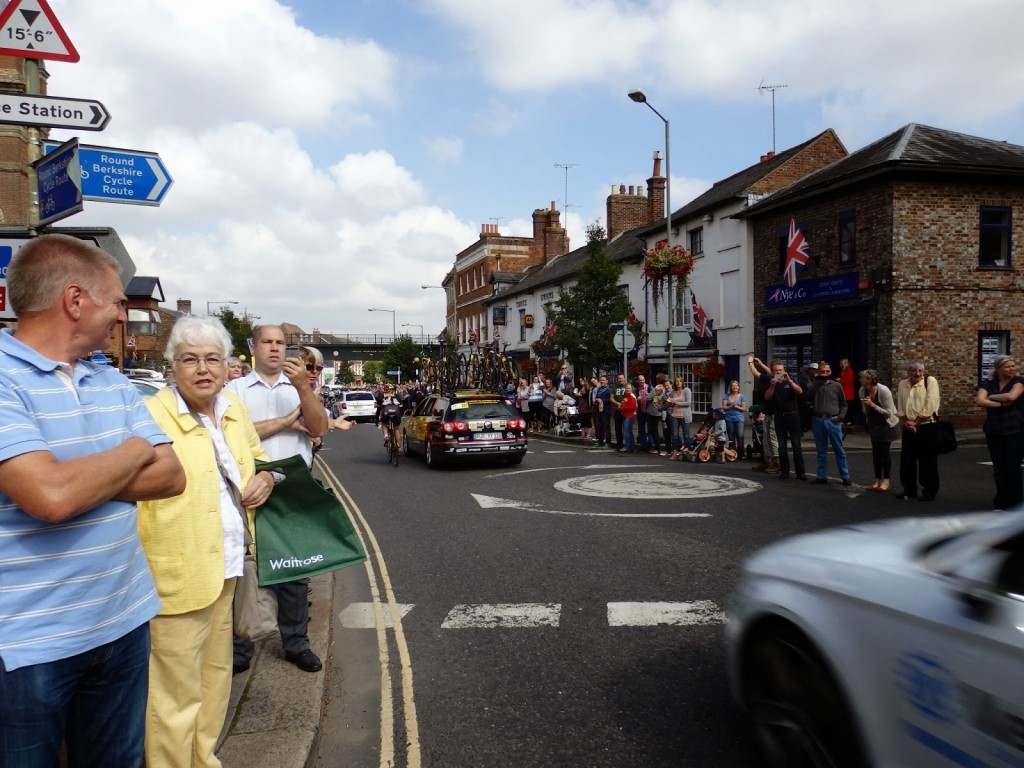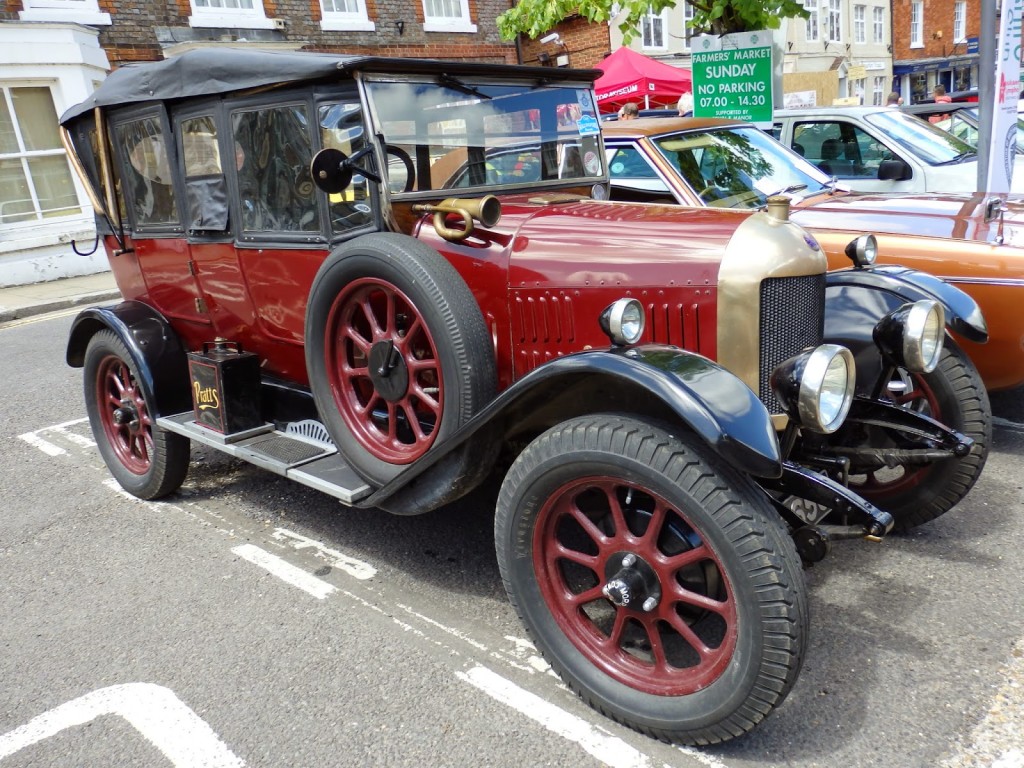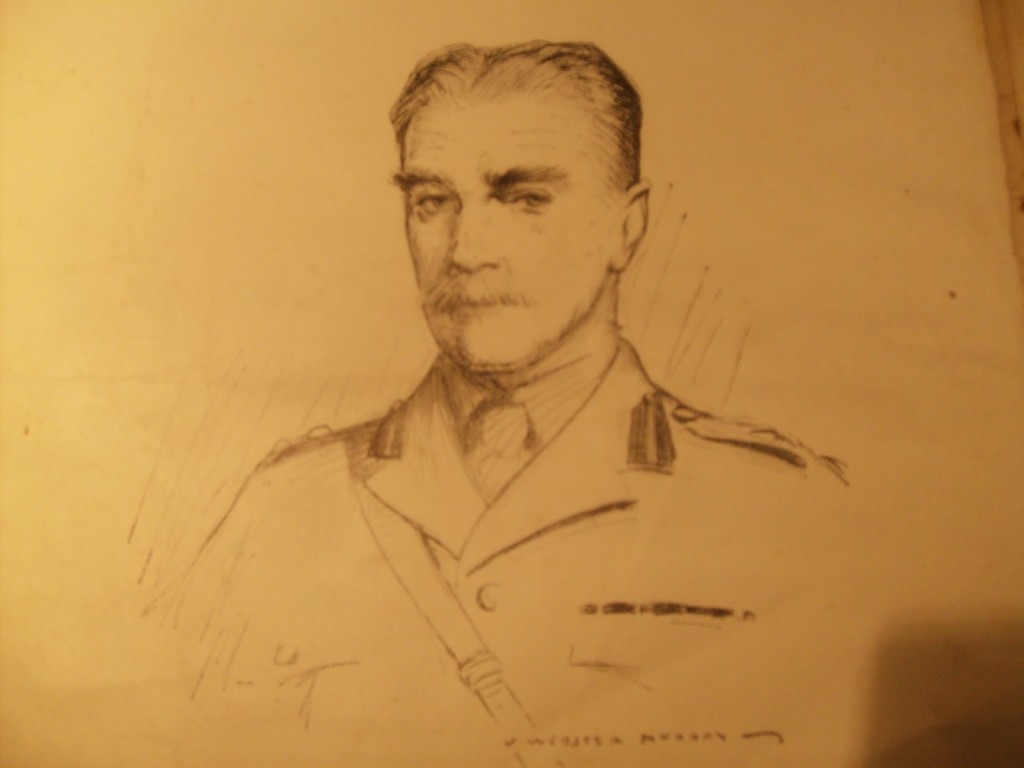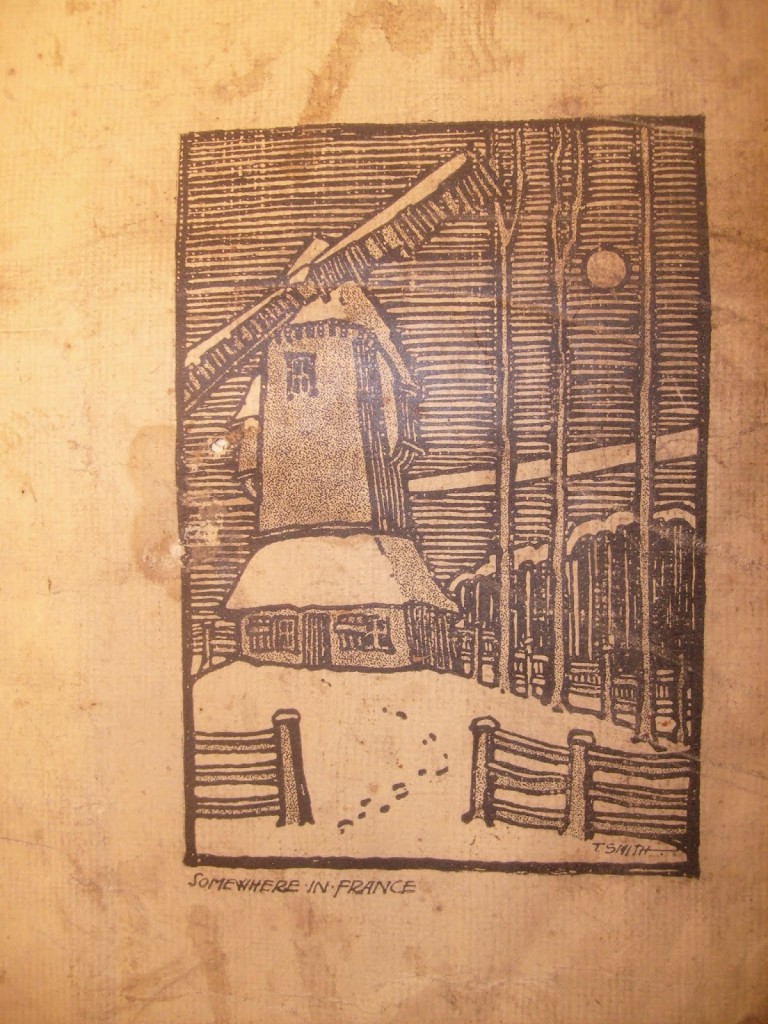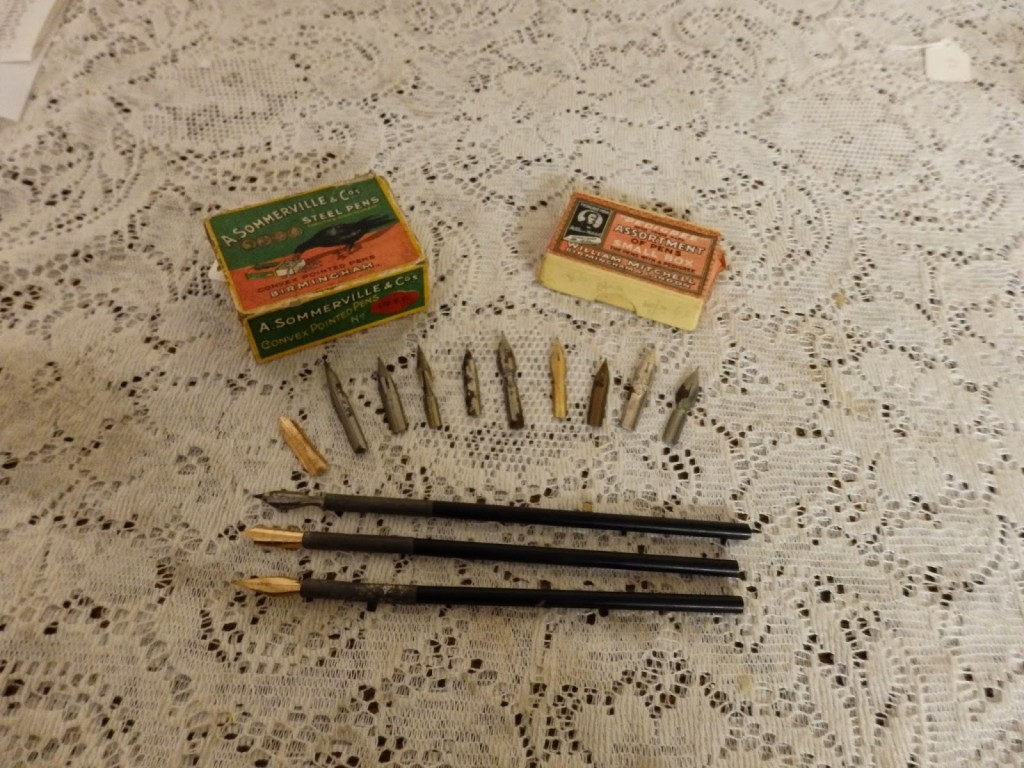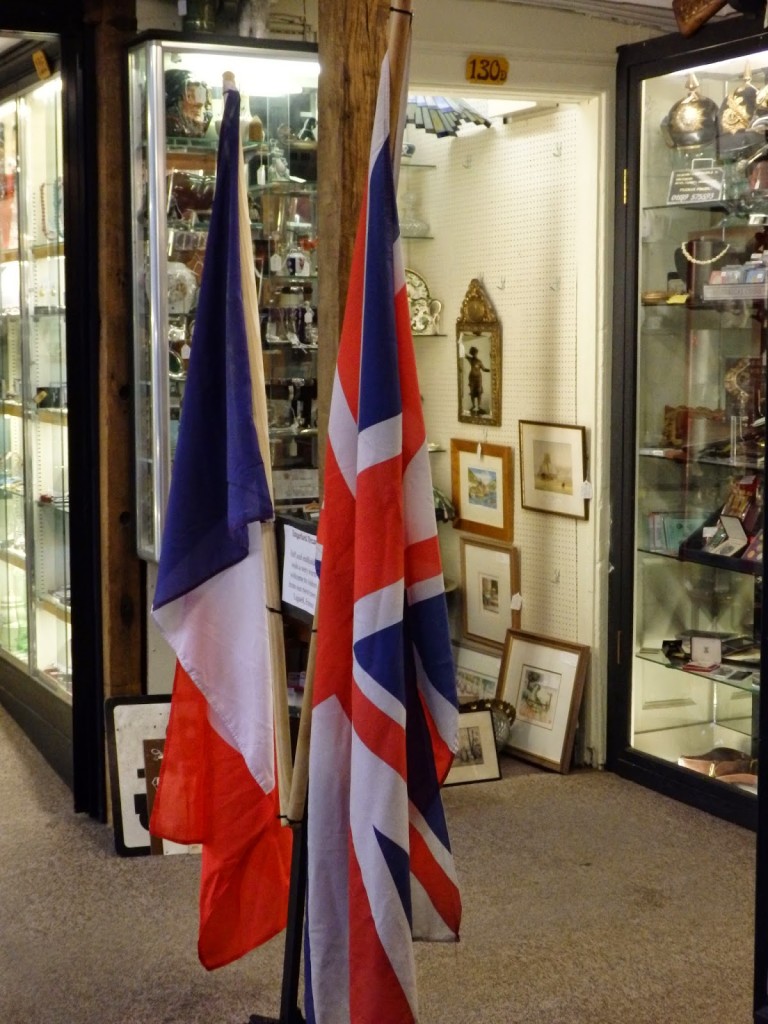Neil Hall, a very good friend of Hungerford Arcade, as well as being a Marlburian, called in this morning having just returned from being interviewed on Radio Wiltshire about the forth coming Afghanaid Conference at Marlborough College. Read below and visit their website to find out about this very interesting charity.
Hungerford Arcade World’s Biggest Coffee Morning
Hungerford Arcade Bomber Command
Two very good friends of Hungerford Arcade, Colleen and Mike Kent, who organise the West Berkshire Classic Vehicle Club Show for us (Sunday, 21st September), have sent me an article on a very special visit they made at the weekend to the Lincolnshire Aviation Heritage Centre.
Rita
lifetime
Fitter on Lancasters during World War 2, so the Lancaster Bomber has always
been my number one interest. In fact
both me, and my wife Colleen, are members of the Lincolnshire Lancaster
Association.
as part of the RAF’s Battle of Britain Memorial Flight, based at Coiningsby,
Lincolnshire, the other in Canada, at the Canadian Warplane Heritage Museum. So
imagine my excitement when the Canadian’s announced they were bringing their
Lancaster FM213 over, to join with the RAF’s Lancaster PA474, for 6 weeks. During which time the 2 Lancasters would be
flying together at Air Displays. I just
had to see the 2 together.
 |
| Canadian Lancaster Bomber FM213 (VERA) |
Lancaster, known as VERA, due to her markings, arrived at RAF Coningsby on the
8th August. The 2 Lancs have
done numerous Fly Pasts and Displays since.
together. On one accession we got to
RAF Coningsby, only to be told that flying was cancelled for the day, due to
low cloud. This however provided us
with an excellent photo opportunity, as both planes were manoeuvred back into
the hangar.
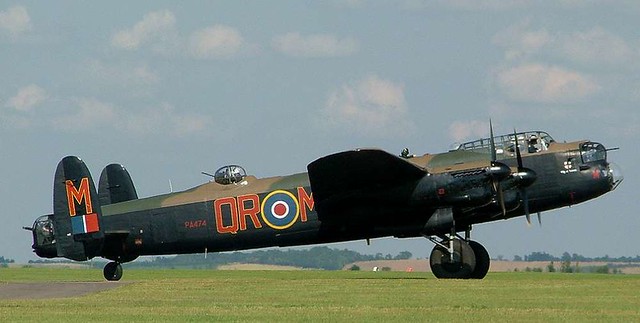 |
| England’s Lancaster Bomber PA474 |
September both aircraft were at Bournemouth Airport, having returned from the
Channel Islands, and booked to display at Goodwood Revival. Unfortunately both went unserviceable, the
BBMF one with an engine problem, and VERA with a brake fault. Both were however repaired, by 17:00 hrs, (a
Hurricane from the BBMF having flown in with the spares). The Canadian then carried out 2 local
flights, before both departed for the display at Goodwood, and returned 50
minutes later, giving the waiting crowd another unexpected treat.
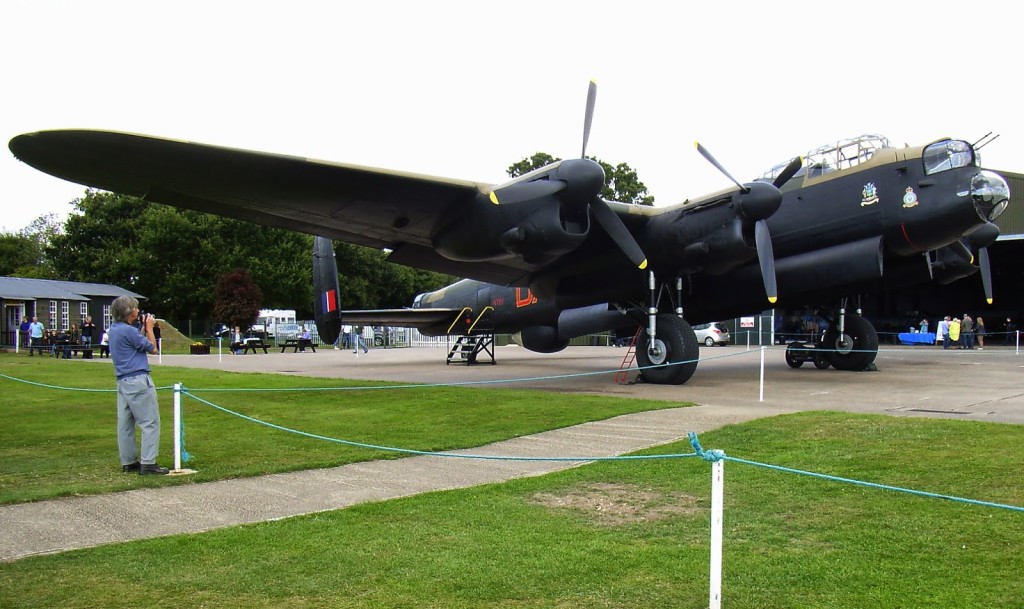 |
| Mike photographing the fabulous WWII Lancaster Bomber |
Lancaster NX611 at Lincolnshire Aviation Heritage Centre, at East Kirkby,
Lincolnshire, just a few miles from Coningsby.
This aircraft taxies most Saturdays, and a visit to watch this is
well worthwhile.
Hungerford Arcade Tour of Britain Bike Race 2014
It was a beautiful warm day and the air was filled with excitement in anticipation of the imminent arrival of the Tour of Britain Bike Race cyclists. This was Stage 6 of the long race from Bath to Hemel Hempstead. The crowds lined the streets of Hungerford to catch a glimpse of the riders taking part.

 The police on their big BMW motorbikes riding ahead, making sure all the roads were clear of traffic, together with the race marshalls on their motorbikes, all added to the spectacle that was about to arrive. Suddenly, there was a great cheer from the top of the High Street and within seconds, cheers rang out from everywhere as they rode through our beautiful market town. Everyone was amazed by the speed they were travelling at – they were magnificent!
The police on their big BMW motorbikes riding ahead, making sure all the roads were clear of traffic, together with the race marshalls on their motorbikes, all added to the spectacle that was about to arrive. Suddenly, there was a great cheer from the top of the High Street and within seconds, cheers rang out from everywhere as they rode through our beautiful market town. Everyone was amazed by the speed they were travelling at – they were magnificent!
To find out more about this fantastic event, go to their website at http://www.tourofbritain.co.uk
Rita
Hungerford Arcade Classic Car Show
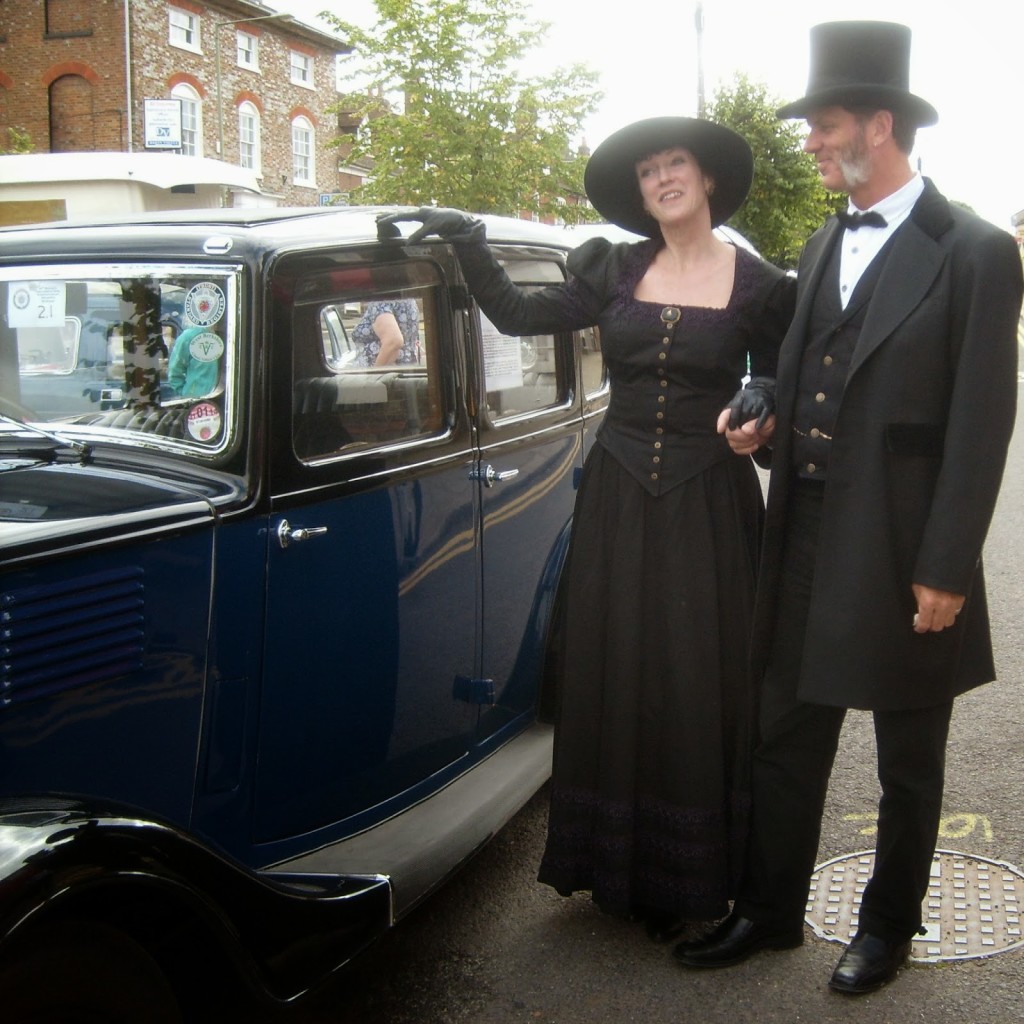 The West Berkshire Classic Vehicles Club is once again coming to Hungerford Arcade to put on a fantastic show in their fabulous classic and vintage cars. This event is entirely free so bring the whole family along to this fantastic event which we hold twice a year. The people are very friendly and will tell you everything they know about their beloved vehicles. They will even let you sit in them and of course, you can take photographs. The cars will be immediately outside the Arcade and in the staff car park at the rear of the building. There is always plenty to see and do at Hungerford Arcade which also has Rafters Cafe` on the top floor where you can relax and have a cup of tea/coffee and enjoy their tasty home-made food. Also on this day, The Thames Valley Farmers Market will be here selling their top quality produce. A fantastic day out and one to remember.
The West Berkshire Classic Vehicles Club is once again coming to Hungerford Arcade to put on a fantastic show in their fabulous classic and vintage cars. This event is entirely free so bring the whole family along to this fantastic event which we hold twice a year. The people are very friendly and will tell you everything they know about their beloved vehicles. They will even let you sit in them and of course, you can take photographs. The cars will be immediately outside the Arcade and in the staff car park at the rear of the building. There is always plenty to see and do at Hungerford Arcade which also has Rafters Cafe` on the top floor where you can relax and have a cup of tea/coffee and enjoy their tasty home-made food. Also on this day, The Thames Valley Farmers Market will be here selling their top quality produce. A fantastic day out and one to remember.Rita
Hungerford Arcade Antiques & Collectables, 26-27 High Street, Hungerford, Berkshire RG17 0NF
E-mail: hungerfordarcade@btconnect.com
Website: www.hungerfordarcade.co.uk
Hungerford Arcade – Thomas Shoel (1759-1823)
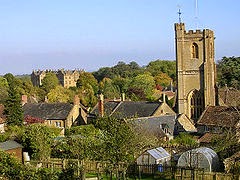
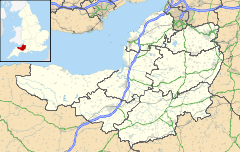
Hungerford Arcade A WWI Trench Journal – The Dump
The
Dump: A Trench Journal
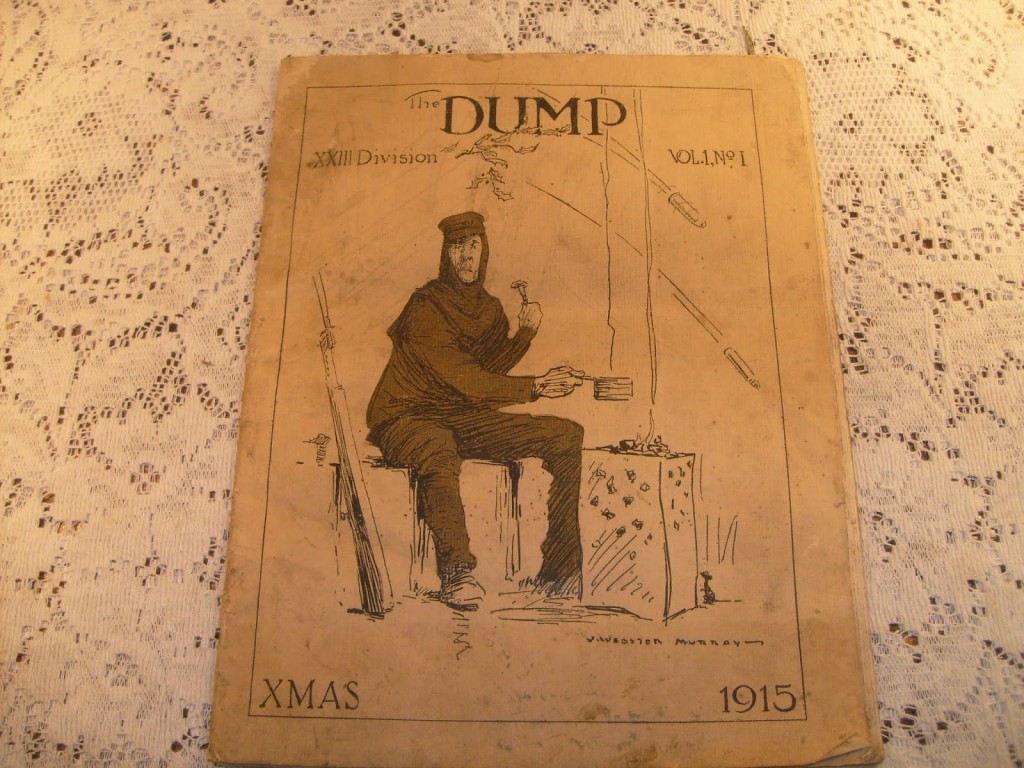 During times of war, when the serving troops are suffering great hardship through situations they can’t control, keeping morale high is one of the biggest
During times of war, when the serving troops are suffering great hardship through situations they can’t control, keeping morale high is one of the biggest
challenges the Army faces.
One example of a great morale booster is this wonderful magazine one of our stallholders showed me. A magazine or “Trench Journal” written for the enjoyment of troops serving in the trenches of the Western Front during The First World War.
The idea of a magazine written by your fellow soldiers was brilliant and
I imagine it offered some much needed comic relief to the poor souls stuck in
the trenches.
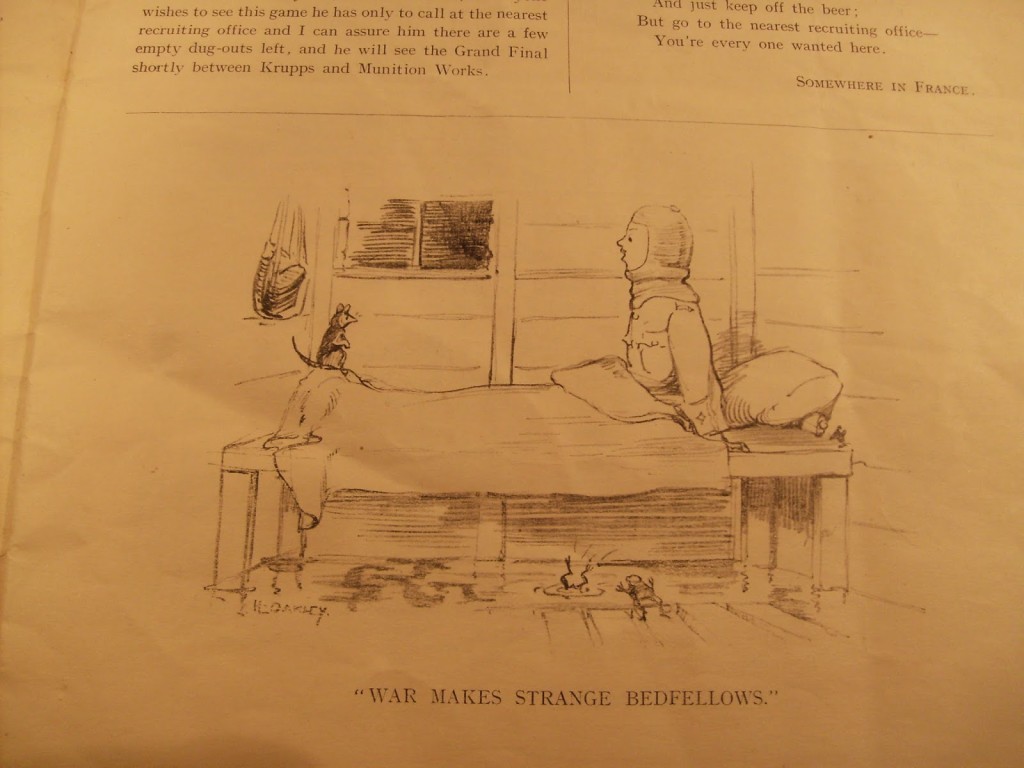 Some are better known than others such as The Wipers Times (named after soldier slang for Ypres where it was first printed.) of which a BBC dramatisation was produced in 2013. Others, such as The Dump are very much unknown.
Some are better known than others such as The Wipers Times (named after soldier slang for Ypres where it was first printed.) of which a BBC dramatisation was produced in 2013. Others, such as The Dump are very much unknown.
While doing some research I found only one mention of this same edition of the journal on an old auction listing, but no information at all.
It seems that the journal had always been planned to be published once a year, at
Christmas, until the end of the War.
However it is my assumption, and please correct me if you believe me to
be wrong, that this was the one and only published issue of The Dump.
The XXIII Division, under the command of Major-General Sir James Melville, was sent to France in August 1915 and this edition was published in Christmas of that year. It is my opinion that so much happened on the Western Front during 1916, including the Battle of the Somme, that the XXIII division was no longer able to produce the magazine.
Being one of humanity’s bloodiest battles, it is more than likely that
some of the main contributors of the journal were killed or wounded at the
Somme.
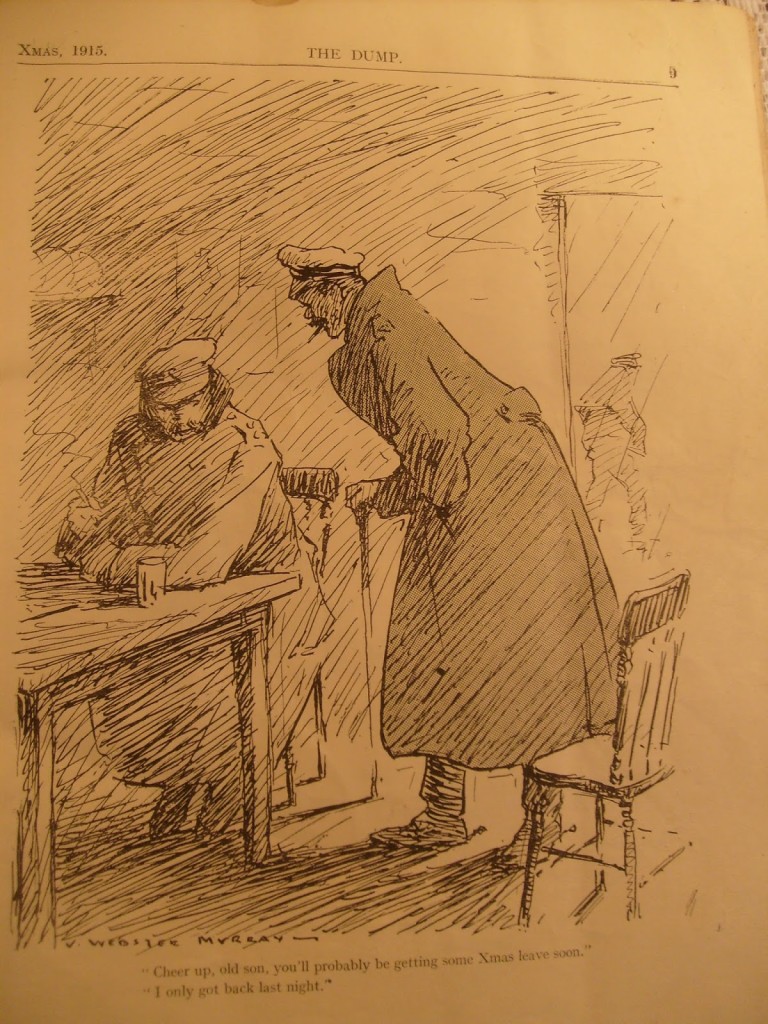 Produced in the winter of 1915 by the XXIII Division, The Dump begins with a message
Produced in the winter of 1915 by the XXIII Division, The Dump begins with a message
from the editor in which he talks of various limitations, which have been overcome in the production of the journal, including time, materials and means of illumination. He goes on to say that
all ranks have contributed in some way towards the publication and the generals and staff officers have been just as ruthlessly sub-edited as the rank and file, if not more so.
Contrary to what you might expect from a war journal, it is full of humourous cartoons and anecdotes. Obviously it was aimed at the troops living in the trenches; keeping hold of your sense of humour when in such poor conditions can be all you need to stay sane.
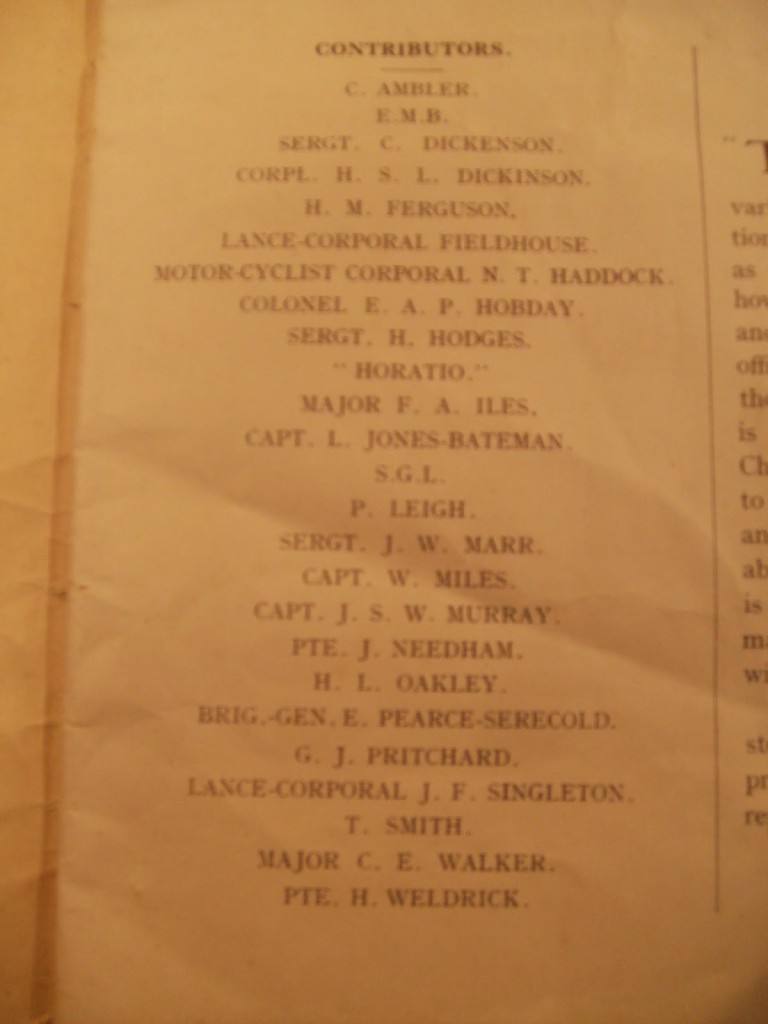 On the first page an advertisement for “Wisquerine” appears; “The latest invention for raising hair on the most beardless youth’s cheek.” One of the testimonials reads, “Your Wisquerine made me a terror to look at in less than a week.” It is a product I can find no mention of anywhere else and am quite certain it is a tongue in (hairy) cheek advert, simply for amusement.
On the first page an advertisement for “Wisquerine” appears; “The latest invention for raising hair on the most beardless youth’s cheek.” One of the testimonials reads, “Your Wisquerine made me a terror to look at in less than a week.” It is a product I can find no mention of anywhere else and am quite certain it is a tongue in (hairy) cheek advert, simply for amusement.
I have included some pictures of my favourite parts of the journal but here I
think I will leave you with a poem by “A Recruit” that seemed to stick with me.
Alex Rogers
AN
APPEAL
From a Recruit.
I’ve eaten my stew with my fingers,
And drunk the juice from my plate,
I’ve tasted mud with the humble spud
I’m given to masticate.
I’ve shared a bowl with the stranger,
Whose face wore a two-day’s coat;
I’ve quaffed my tea in which I could see,
Strange bodies bob round and float.
I’ve slept in a whitewashed barrack,
With friends of unfragrant kind;
In a luscious rug, where the sporting bug
Was not a strange thing to find.
I’ve sat in a growing puddle,
In my one and only pair;
Wild nights I’ve spent in a leaky tent
Where twelve had the floor to share.
I’ve tried my hand at some laundry,
When my shirts I’ve managed to rinse;
They were hung to dry, but the wind was high,
And I’ve never seen them since.
But, bless you, I’m not grumbling,
What Briton would ever dare!
When over the way, in a ghastly fray,
There’s shrapnel and blood for fare.
So come, you chaps, from your downy beds,
It isn’t all nice, no doubt;
But you’d better die eating English dirt,
Than live to eat Sauerkraut.
Deeply Dippy: The Rise and Fall of Pen and Ink
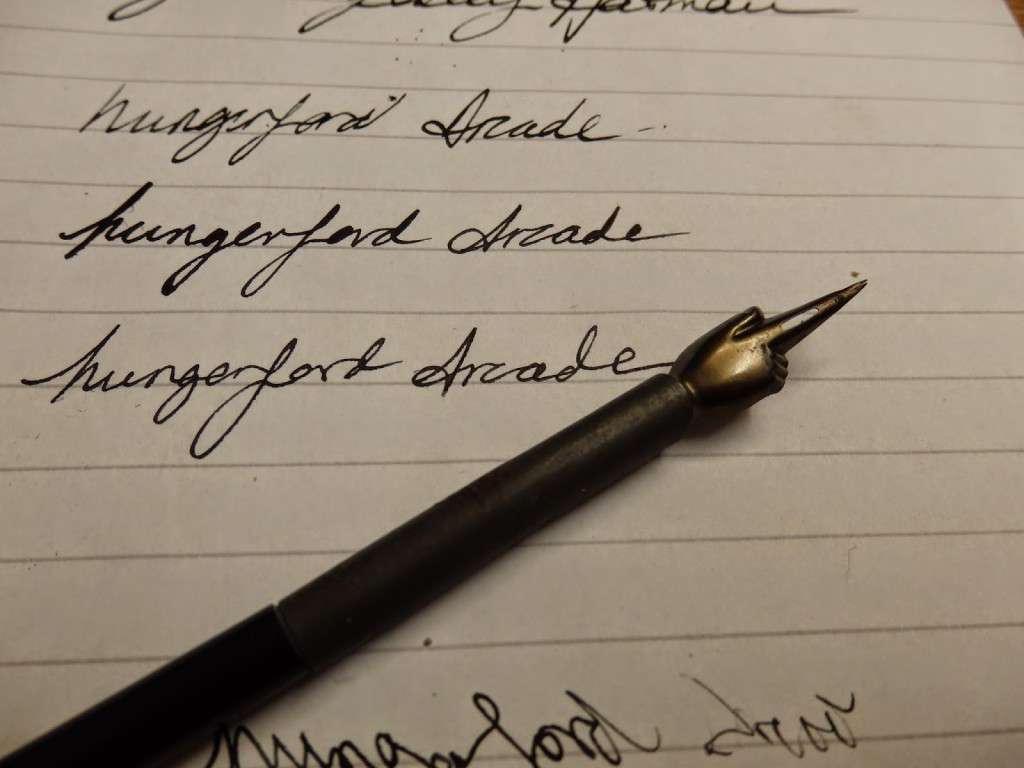 I’m sure many readers of this blog have fond memories of the
I’m sure many readers of this blog have fond memories of thedays when using biros, rollerballs and ballpoint pens was discouraged in
school, in favour of the dip pen. Now
however, they seem to have become the standard. I’m sure cost is the main reason, as well as speed with which
they can be used and tidiness.
life. Of course I used to use fountain
pens in school but handwriting wasn’t of the importance it used to be and I
would lose them or break them and go back to using cheap ballpoints.
contrary to my initial thoughts that it would be messier, it actually improved
my handwriting (though it’s still not very good). The reason for this is that I was paying more attention to the
pen and how I was using it; I had to keep track of how much ink I had left on
the nib so I wouldn’t run out half way through a word; I had to be conscious of
the fact that the ink was still wet on the paper so I adjusted the position of
my hand so as not to smudge the previous sentence. This may all seem second nature to those of you who used these
pens on a daily basis while in school but as I’ve said already, handwriting
wasn’t considered that important while I was in school in the nineties.
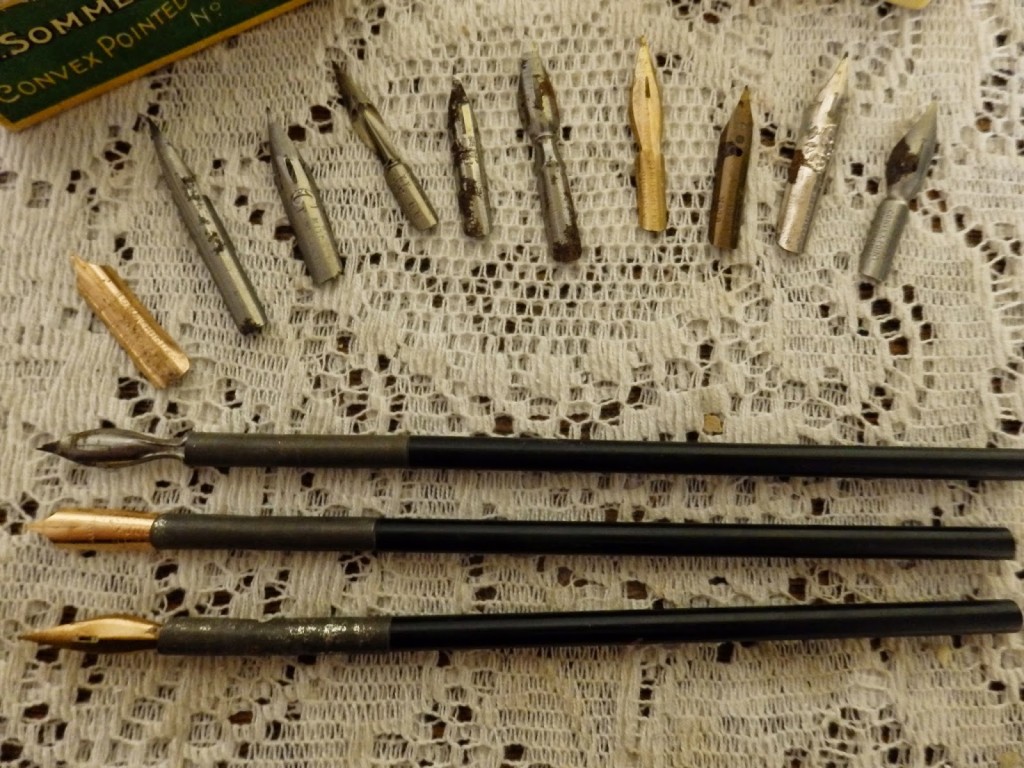 Dip pens have been used since the early 19th
Dip pens have been used since the early 19thcentury when they replaced quill pens and continued to be popular up until
quite recently. In 1822 John Mitchell of Newhall Street, Birmingham pioneered mass production of pen nibs and was closely followed by his brother William, into the industry. The Mitchell Family was the first company to use machines to cut steel nibs, greatly speeding up the manufacturing process. This mass production of cheap, quality nibs meant pens were soon available worldwide at a fraction of the cost of a good quality, hand-made feather quill, but just as functional.
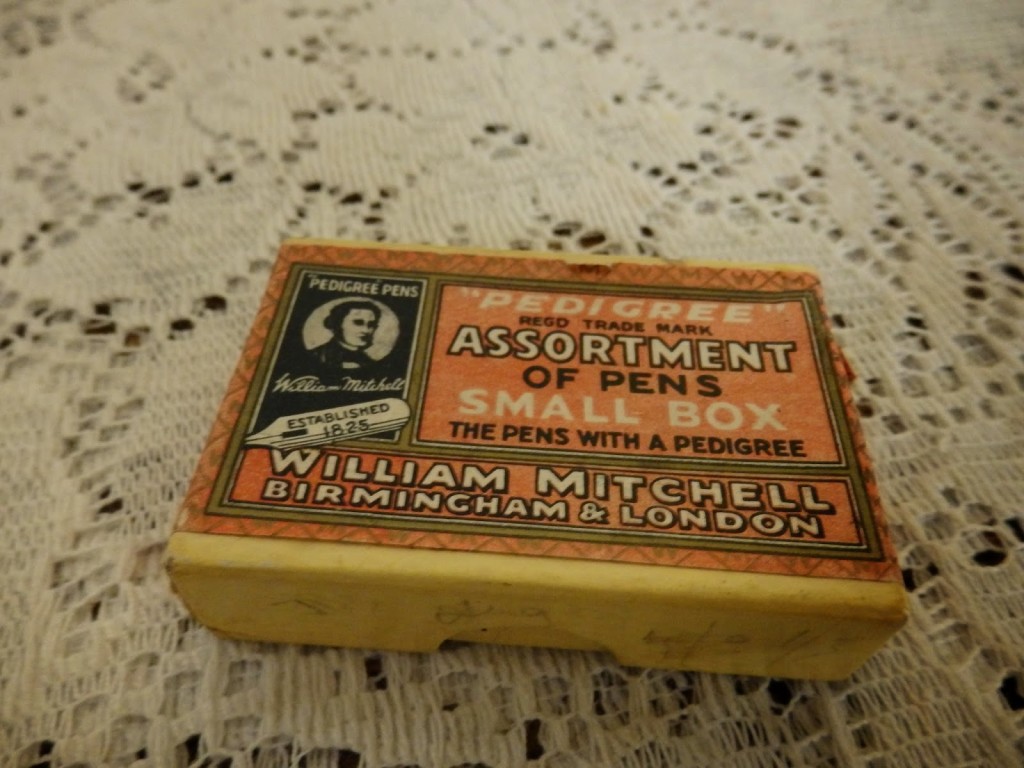 The main users of them now are calligraphers, illustrators and cartoonists as they can apply a much finer line than any fountain pen and colour changes can be done much more quickly and cheaply by simply wiping the nib and dipping in a different colour ink. The name dip pen is often not used by these professionals as they rarely dip to recharge the ink, preferring a pipette or syringe to apply the ink to the nib to keep control of the amount of ink used. Therefore the name nib pen is actually more common.
The main users of them now are calligraphers, illustrators and cartoonists as they can apply a much finer line than any fountain pen and colour changes can be done much more quickly and cheaply by simply wiping the nib and dipping in a different colour ink. The name dip pen is often not used by these professionals as they rarely dip to recharge the ink, preferring a pipette or syringe to apply the ink to the nib to keep control of the amount of ink used. Therefore the name nib pen is actually more common.to be neater, or take more time over their writing or maybe just for the
nostalgia, I’m sure they will never be forgotten about completely. An author by the name of Shelby Foote is
testament to this by writing his massive trilogy on the American Civil War The
Civil War: A Narrative using only a dip pen. His reason was quite simple:
the frequent need for dipping gave him more time to think about what he
was going to write next.
century when fountain pens were developed for use with a self contained
cartridge rather than the need for an ink bottle. It wasn’t long before mass produced plastic disposable pens were
too cheap to ignore and they have now all but taken over completely.
Hungerford Arcade Training Day
 |
| Manager, Alex Rogers with trainee, Dan Evans |
Our youngest ever stallholder at Hungerford Arcade, (Dan) Daniel Evans – Unit 30W had a very enjoyable behind the counter training day with manager, Alex Rogers. He said that he loved meeting the customers and having a chat. All in all, Dan had a great day and would like to do it again some time.
Hungerford Arcade Welcomes Ligueil, France
Hungerford Arcade is very proud to welcome our friends from Hungerford’s twin town of Ligueil in France.
For all the latest news, read our Newsletter at www.hungerfordarcade.co.uk




